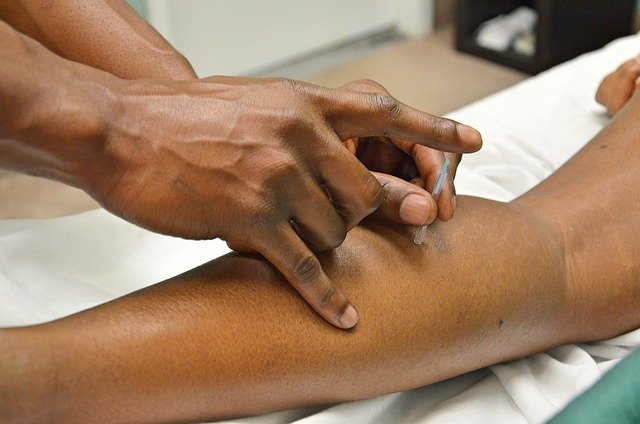Breast Cancer Red Flags Every Woman Should Know: Early Signs for Lifesaving Awareness
Breast cancer red flags every woman should know are crucial for early detection and improved outcomes. Common symptoms like changes in breast shape or size, lumps, and skin alterations can signal potential issues. Additionally, warning signs such as persistent pain and swelling in lymph nodes shouldn't be ignored. Regular self-exams and professional screenings are vital for proactive breast health.

Breast cancer remains one of the most commonly diagnosed cancers among women worldwide. While advances in medical technology and treatment have improved survival rates dramatically, the key to successful outcomes often lies in early detection. Many women focus solely on annual mammograms, but being attuned to the physical changes in your body can alert you to potential problems between scheduled screenings. Understanding what to look for and when to seek medical attention empowers women to take an active role in their health and potentially catch cancer at its most treatable stages.
Understanding Breast Cancer Symptoms
The most well-known symptom of breast cancer is a lump in the breast or underarm area. However, not all lumps are cancerous, and not all breast cancers present as lumps. A breast lump may feel hard and immovable or soft and mobile. It might be painful, though many cancerous lumps are painless. Any new lump or mass that persists should be evaluated by a healthcare provider. Changes in breast size or shape can also signal a problem. If one breast becomes noticeably larger, smaller, or changes shape without an obvious cause like weight gain or loss, this warrants medical attention. Skin changes are another important indicator. Dimpling, puckering, or skin that resembles an orange peel texture can indicate underlying issues. Redness, scaliness, or thickening of the breast skin or nipple area should not be ignored. Nipple changes deserve special attention as well. Nipple retraction, where the nipple turns inward rather than pointing outward, or any unusual discharge especially if bloody or occurring without squeezing requires prompt evaluation.
Other Warning Signs of Breast Cancer
Beyond the commonly discussed symptoms, several other warning signs deserve attention. Persistent breast pain or tenderness in one specific area, particularly if it does not correlate with your menstrual cycle, should be evaluated. While breast pain is rarely the only symptom of cancer, when combined with other changes, it becomes more significant. Swelling in the armpit or around the collarbone can indicate that cancer has spread to nearby lymph nodes. This swelling may appear before a breast lump is even detectable. Changes in the nipple or areola, including itching, burning, or the development of a rash or sore that does not heal, can be signs of a rare form of breast cancer called Paget disease. Unexplained weight loss, fatigue, or bone pain in more advanced cases may indicate that cancer has spread beyond the breast. Any persistent symptom that seems unusual for your body deserves medical evaluation, even if it seems minor.
Importance of Breast Cancer Awareness
Breast cancer awareness extends beyond knowing the symptoms. It involves understanding your personal risk factors and taking proactive steps toward prevention and early detection. Women with a family history of breast cancer, particularly in first-degree relatives, face higher risk and may need earlier or more frequent screenings. Genetic mutations, particularly in the BRCA1 and BRCA2 genes, significantly increase breast cancer risk. Age is another factor, with risk increasing as women get older, though younger women can and do develop breast cancer. Lifestyle factors including alcohol consumption, obesity, physical inactivity, and hormone replacement therapy can influence risk. Regular self-examination helps women become familiar with the normal look and feel of their breasts, making it easier to notice changes. While self-exams alone are not sufficient for detection, they complement clinical exams and mammography. Education about breast cancer empowers women to advocate for themselves in healthcare settings and to seek second opinions when something feels wrong.
Breast Cancer Detection Methods
Multiple detection methods work together to identify breast cancer at early, treatable stages. Mammography remains the gold standard screening tool for breast cancer. This X-ray imaging can detect tumors too small to feel and can identify microcalcifications that may indicate early cancer. Guidelines typically recommend annual or biennial mammograms starting at age 40 or 50, depending on individual risk factors. Clinical breast exams performed by healthcare providers during routine checkups allow trained professionals to feel for abnormalities and assess any concerns. Ultrasound imaging helps distinguish between fluid-filled cysts and solid masses and is particularly useful in women with dense breast tissue. Magnetic resonance imaging, or MRI, provides detailed images and is often recommended for high-risk women or to further evaluate suspicious findings. Biopsy procedures, including fine needle aspiration, core needle biopsy, or surgical biopsy, provide definitive diagnosis by examining tissue samples under a microscope. Newer technologies like 3D mammography and molecular breast imaging continue to improve detection capabilities, particularly for women with dense breast tissue where traditional mammograms may be less effective.
When to Seek Medical Attention
Knowing when to contact a healthcare provider can make the difference between early and late-stage diagnosis. Any new lump or mass in the breast or underarm should be evaluated promptly, even if it seems small or painless. Do not wait for your next scheduled appointment if you notice persistent changes in breast size, shape, or appearance. Nipple discharge, particularly if bloody, clear, or occurring from only one breast without squeezing, requires immediate attention. Skin changes including redness, dimpling, puckering, or rash-like symptoms that persist beyond a few days should be examined. If you experience persistent breast pain in one specific location that does not resolve with your menstrual cycle, schedule an evaluation. Trust your instincts about your body. If something feels wrong or different, even if you cannot pinpoint exactly what has changed, it is better to seek evaluation and receive reassurance than to delay and risk missing early cancer. Healthcare providers would rather see patients for false alarms than have them delay seeking care for legitimate concerns.
Taking Action for Your Health
Early detection of breast cancer significantly improves treatment outcomes and survival rates. By familiarizing yourself with the normal appearance and feel of your breasts, you position yourself to notice changes quickly. Maintain regular screening schedules appropriate for your age and risk level, and do not skip appointments even when life gets busy. Discuss your personal and family medical history with your healthcare provider to determine if you need enhanced screening or genetic testing. Adopt healthy lifestyle habits including maintaining a healthy weight, limiting alcohol consumption, staying physically active, and discussing the risks and benefits of hormone therapy if applicable. Share breast cancer awareness information with the women in your life, as education and early detection save lives. Remember that most breast changes are not cancer, but only medical evaluation can provide that reassurance and peace of mind.
This article is for informational purposes only and should not be considered medical advice. Please consult a qualified healthcare professional for personalized guidance and treatment.




